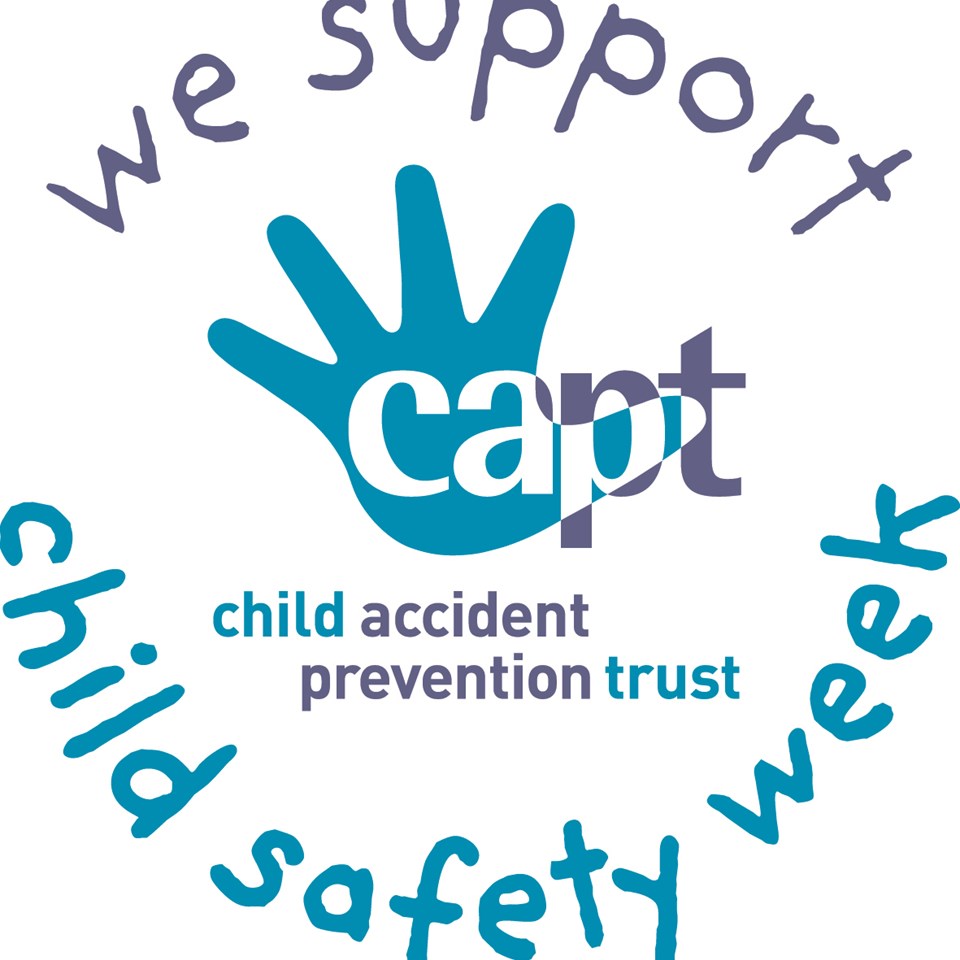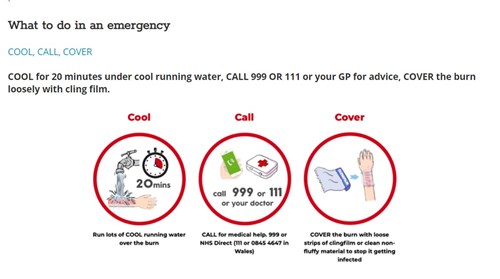Julia is a Professional Development Lead for School Nursing and Kirstie is Professional Development Lead for Health Visiting and Infant Feeding Lead
Burns and scalds

It’s Child Safety Week, run by the Child Accident Prevention Trust. The aim of this week is to help families build confidence and skills in managing the real risks to children’s safety, so all children have the freedom to grow and learn, safe from serious harm.
These statistics from CAPT.org.uk highlight the concerns that we’ll talk about this week:
- Accidents are one of the biggest killers of children in England and Wales, second only to cancer (ONS mortality statistics)
- 1 child under 5 dies every week in England from an accident at home (Average of 55 under 5s a year, Public Health England)
- 2,300 children under 16 are killed or seriously injured on our roads every year (Department for Transport)
- 40,000 children are admitted to hospital as an emergency after an accident at home (Figures for England under 5s, Public Health England)
- 80% of accidents to under 5s happen at home
- Older children are at greater risks on the roads – accidents peak at age 12 (Department for Transport)
Did you know that 95% of burns and scalds happen at home?
A hot drink could be one of the most dangerous things in your lounge. If it spills on your child, that cup of tea can still burn them, even 15 minutes after you made it. Recent data from The Children’s Burns Trust highlights that over 10,000 babies and toddlers are burnt by a hot drink every year – that’s 30 children a day on average.
But what else can cause a burn?
- In the kitchen – children love to play with saucepans and make lots of noise, but when they are on the hob, make sure you point the handles towards the back so they can’t grab them. Kettle cords need to be kept away from the side of the worktop, and hot drinks too. Your hobs and oven doors stay really hot even after they’ve been turned off, so make sure that small children are aware of the dangers and know how to be in the kitchen safely, and don’t leave them unsupervised.
- In the bedroom – straighteners and curling tongs can reach temperatures of 235˚C: so hot you can cook on them! Make sure they are stored away safely or put into a heatproof bag.
- In the bathroom – running a bath? Put the cold water in first, then add the hot to it so you can’t raise the temperature too high. Use your elbow to test how warm it will be for your children. Staying with your little ones while they are in the bath means you can keep an eye on them at all times, making sure they don’t touch the hot tap, or turn on the shower.
- The living room – Make sure your space is safe, with risks minimised. If you have an open fire or an imitation fire, children love to look at and touch the flames. Don’t take the risk; use a fireguard.
- Outside – BBQs and bonfires can take an awfully long time to cool down once finished. The embers retain their heat and can re-ignite too. Keep small children away from cooling BBQs.
What to do in an emergency
COOL, CALL, COVER
- COOL for 20 minutes under cool running water
- CALL 999, or 111, or your GP for advice
- COVER the burn loosely with clingfilm

Visit our Child Safety pages to read more.